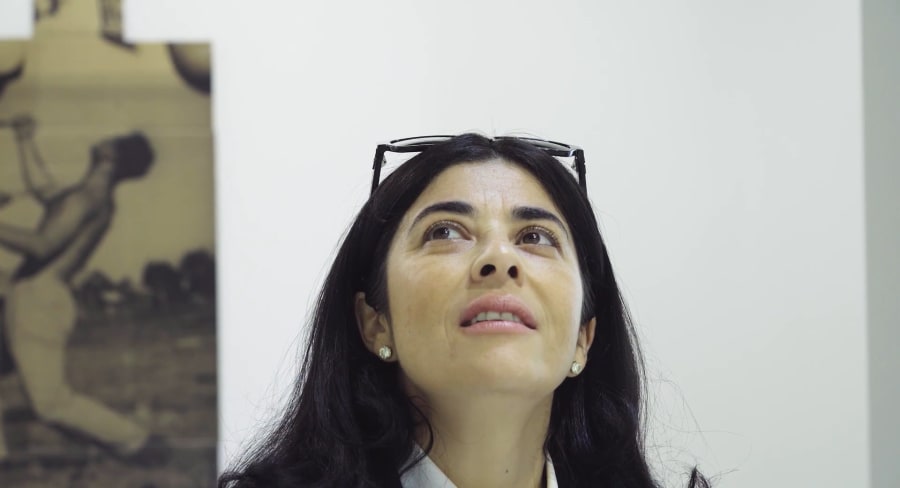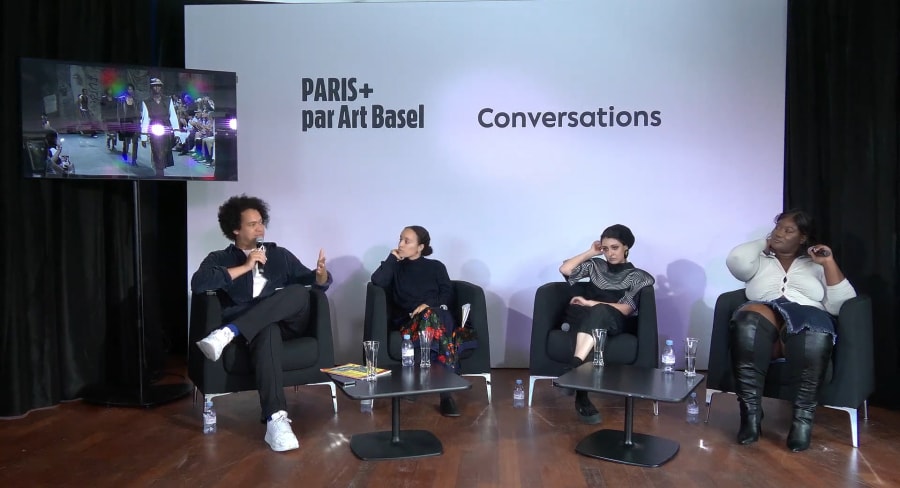Johannesburg’s art scene is a picture of paradox. It is gritty and resilient, but also filled with energy and excitement. It has continuously thrived in the absence of institutional support and infrastructure. While facing the same issues that plague most cities across the African continent – unemployment, political instability, and failing infrastructure – its occupants exist, create, and survive in the face of the toughest conditions. This defines the culture that courses through Johannesburg: artists find a way through, together. ‘This wonderful, crazy city is constantly reinventing itself and continues to connect with the rest of the African continent,’ says Clive Kellner, Executive Director of Joburg Contemporary Art Foundation.
Johannesburg’s creative hubs were once clustered around the Central Business District in Newtown and Braamfontein – when both areas were buzzing with jazz and theater clubs, bars, art galleries, and a thriving nightlife. However, over the past two decades, the wealthier northern suburbs have emerged as the new hub for art and entertainment due to upgraded infrastructure and investment. Major galleries such as Goodman Gallery, Stevenson, Gallery MOMO, Everard Read, and BKhz have settled in Rosebank, Parktown, and the surrounding areas.
Still, ‘the city has many pulse points,’ explains Lerato Bereng, a director at Stevenson, the cutting-edge gallery founded by Michael Stevenson in 2003 and representing artists including Pieter Hugo, Hylton Nel, and Frida Orupabo. Bereng does not see this as fragmentation, but rather as various artists and cultural workers finding interesting ways of working. ‘Things are merging and spilling over, and art is engaged with in different spaces,’ she says. ‘There is a cool energy of cross-disciplinarity here.’
‘Despite the challenges, Joburg remains one of our country’s most dynamic artistic hubs,’ says Liza Essers, the owner and director of Goodman Gallery, one of South Africa’s oldest commercial art venues, founded in 1966. In its early days, Goodman was one of the only galleries that championed the work of Black artists such as David Koloane and Sam Nhlengethwa, at a time when they were restricted by the apartheid government. More recently, Goodman has created cross-diasporic conversations by representing award-winning artists with roots in the Global South, among them Kapwani Kiwanga, Remy Jungerman, Alfredo Jaar, El Anatsui, and one of Johannesburg’s greatest exports, William Kentridge.
The gallery’s reach is international, but it also supports homegrown talent through programming and exhibitions that bring critical discourse around site-specificity, such as the recent exhibition ‘Urban Entanglements: How Art Reflects Citymaking’, featuring David Koloane, Sam Nhlengethwa, and Kagiso Pat Mautloa. For Essers, the city’s potential is nurtured through building new audiences and promoting accessibility by drawing on interdisciplinary convergences. ‘South Africa has a rich tradition of jazz culture,’ she says, to name an example. ‘This is why we often incorporate jazz and visual art as a way to bring people together.’
Also fulfilling a crucial role is FNB Art Joburg, which was founded in 2008 and is the oldest contemporary art fair on the African continent. Bereng describes it as ‘a year-long fair that continues to be an instigator of convenings and engagements.’ As a fixed date on the continent’s art calendar, the fair is key to sustaining a commercial cultural ecosystem that centers practitioners. ‘In 2019, the fair repositioned itself to reflect the growing stature of contemporary African art on both the global stage and the continent,’ says the fair’s manager Kim Kandan. ‘The fair puts together a quality-focused boutique offering that includes both leading galleries and their artists, as well as emerging spaces operating innovative models from the continent.’
Art Joburg’s ability to cultivate a culture of gallery-going and engagement with art is particularly valuable, as are the ancillary programs that have cropped up around it. Open City, for example, is a program running parallel to the fair that activates the city with art, music, performance, food, and fashion for more than 16 days. It creates space for independent and emerging cultural practitioners to reach wider audiences. Also taking place during the fair’s run is The BMW Art Generation, a global conference that in 2025 features speakers including artist Zanele Muholi. Taking place at NIROX Sculpture Park – set within the Cradle of Humankind paleoanthropological site – The BMW Art Generation is designed to ‘grow audiences, support galleries, and create educational opportunities across the cultural landscape,’ says Kandan. ‘By engaging emerging collectors, encouraging cross-sector collaboration, and spotlighting both established and up-and-coming artists, the initiative fosters deeper public engagement and ensures that the art ecosystem becomes and remains accessible.’
What defines collection practices in Johannesburg? Bereng notes that many young professionals within art and art-adjacent industries are at the beginning of their collecting journeys. ‘They start by collecting cautiously,’ she notes, but alongside them are ‘established collectors who are generous and continue to support the local ecosystem.’ She points to The BMW Young Collectors Co., an initiative organized in partnership with Art Joburg, as a great way to highlight local artists and provide new collectors with the education they need to foster long-term collecting. Aimed at entrepreneurs, founders, and CEOs under 40, the initiative, now four years old, comprises an annual program of bespoke events that include studio visits, conversations with established collectors, access to private exhibition previews, and walkabouts.
South Africa also boasts a rich history of public collections – including what was once the largest public collection of Modern and contemporary art in sub-Saharan Africa at the Johannesburg Art Gallery – but these are not growing at the same rate as their private counterparts. They face significant infrastructural challenges in maintaining and displaying their holdings. As a result, private collectors and foundations are not only filling gaps in contemporary acquisition but also carrying the torch of public education on art history, collecting methodologies, and cultural preservation that would traditionally fall within the mandate of public institutions.
One of these is the Joburg Contemporary Art Foundation, a non-collecting venue with an ethos to advance the appreciation of Modern and contemporary art. ‘As a philanthropic institution that is free to the public, our mission is to provide high-quality artistic programming that combines research, technology, and art exhibitions – and associated talks, podcasts, and publications – that sits adjacent to the commercial market in Johannesburg and South Africa, thereby enhancing the cultural offerings of the larger art ecosystem in the city,’ explains Clive Kellner.
Such venues are also responding to an increasingly sophisticated audience whose art consumption and aesthetic tastes are shifting. Kellner reflects on this as ‘the privilege of serving the public through programs, where the effect is a genuine thirst for knowledge.’ Alongside research-based and conceptually rich exhibitions, there is a need for greater boundary-crossing experiences that do not place contemporary art in a silo. Often, these merge music, poetry, fashion, and design. The Standard Bank Art Lab, managed by the artist and writer Dr. Same Mdluli, has filled this gap since opening in June 2025. The hybrid space hosts interdisciplinary exhibitions and is situated in a shopping center at Nelson Mandela Square in Sandton, positioning itself within ‘the richest square mile in Africa,’ in an attempt to change perceptions about art’s accessibility as part of everyday experiences.
While such venues focus on reaching new audiences through strategic placement, the city’s grassroots artist community provides an equally vital foundation for cultural development. Central to Johannesburg’s artist-run culture is August House, a 1940s building that has rented studios to more than 40 independent, pan-African contemporary artists for more than 15 years. The space has hosted internationally recognized artists and curators, including Dineo Seshee Bopape (winner of the Artes Mundi 9 Prize in 2021 and the Future Generation Art Prize in 2017), Gabi Ngcobo (curator of the 10th Berlin Biennale), and Nelson Makamo. Beyond providing a place to create and convene, August House offers programming that supports both individual artists and the broader visual arts industry.
Johannesburg’s cultural vitality is undeniable and compelling, but its future depends on addressing critical infrastructural issues. The city urgently needs more functional public art spaces to support its artists, makers, and cultural workers, while also recognizing and funding the private initiatives currently filling these institutional voids. ‘Fairs and galleries alike face an interesting future,’ Kandan explains. ‘Relevance continues to remain key, and innovation is constantly necessary.’
FNB Art Joburg runs September 5–7, 2025.
Nkgopoleng Moloi is a writer based in Cape Town. She is the editor of ArtThrob, a leading contemporary visual arts publication in South Africa. Her work has appeared in Artforum, Elephant Art, Mail & Guardian, and The British Journal of Photography. She recently curated ‘Practices of Self-Fashioning’, an exhibition exploring Queer mobility at the Goethe-Institut in Johannesburg.
Caption for header image: View of Meleko Mokgosi's exhibition 'Speculations on Drawing', at Stevenson. Photograph by Andile Buka for Art Basel.
Published on September 5, 2025.


